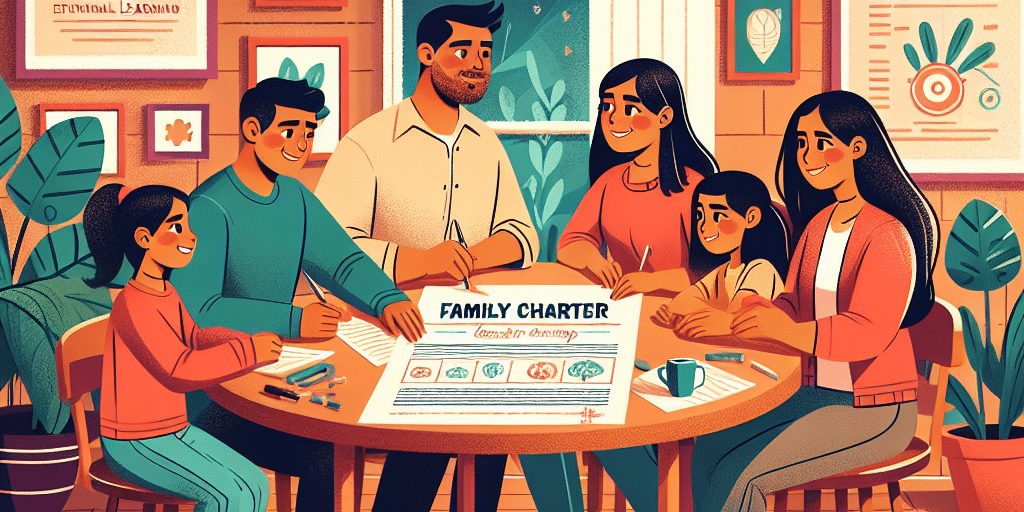Building connections through shared knowledge and values
Introduction
In an ever-evolving world, the commitment to lifelong learning is more important than ever. A family charter can serve as a guiding document that aligns your family’s values with your educational goals. This article explores how to create a family charter that fosters an environment of continuous learning.
What is a Family Charter?
A family charter is a written agreement that defines the principles, goals, and practices your family commits to uphold. It acts as a roadmap, ensuring that all family members are on the same page and that everyone understands their roles in supporting each other’s learning journeys.
Why is Lifelong Learning Important?
- Adaptability: Lifelong learning equips family members with the skills needed to adapt to new challenges.
- Growth Mindset: A commitment to learning fosters resilience and encourages a growth mindset.
- Stronger Relationships: Learning together strengthens bonds and creates shared experiences.
Steps to Craft Your Family Charter
-
Gather Your Family
Involve all family members in the process. This ensures that everyone’s voice is heard and valued.
-
Identify Core Values
Create a list of values that reflect your family’s beliefs. Consider values such as curiosity, respect, and perseverance.
-
Set Learning Goals
Articulate specific learning goals that the family aims to achieve collectively, such as reading a certain number of books or engaging in community service.
-
Establish Learning Activities
Develop a list of activities that promote learning within the family. Options can include family game nights, educational outings, or book clubs.
-
Review and Revise
Set a regular schedule to revisit your family charter and make adjustments as necessary. This keeps your charter relevant and aligned with evolving goals.
Putting Your Charter into Action
Once your family charter is crafted, it’s time to put it into action. Ensure that family members hold each other accountable and celebrate milestones together. Share progress, host discussions, and reflect on what you’ve learned as a family.
Conclusion
A family charter serves as more than just a document; it’s a commitment to fostering a culture of lifelong learning and support within your family. By working together and investing in each other’s growth, you can create an enriching environment that benefits all members for years to come.










